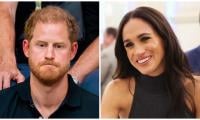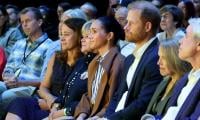41,638 private schools sprang up in Punjab in decade
LAHORE: During the last 10 years, 41,638 new schools were established by private sector across the Punjab province while the government could open only 1,035 new public schools, an analysis by The News has found.
This comparative analysis is based on annual school census 2016 and private school census 2016 prepared by the Punjab Education Sector Reform Programme (PESRP) of the school education department, Punjab. The results of two censuses were released and made publicly available in August, 2017.
As per the censuses, there are total 60,502 private schools while the number of public schools is 52,231 across the province. Of these private schools, some 11,000 are financially supported by the government’s Punjab Education Foundation (PEF). Punjab minister for schools counts them among the public schools despite the fact these schools will shift the financial burden on students as soon as the government stops its funding.
The schools run by the armed forces, Lahore Development Authority and some other government departments—in hundreds—have also been reflected in the private schools data which we know are not private. But these schools do charge fee unlike schools under the administrative control of Schools Education Department (SED), Punjab where education is completely free and even textbooks are provided free-of-cost to the students. And this is not a favour; the government has constitutional obligation to do so.
It was for the first time in history the Punjab government conducted census of private schools. The number of private schools established during the last 10 years is really astonishing as this is almost equal to the number of schools the successive governments could establish in the province in 60 years i.e., from the year 1947 to 2006.
In absence of a strict regulatory regime and lack of political will to prioritise education, this sector has emerged as a lucrative ‘business’ in Pakistan. Result is obvious. Today, of all schools in Punjab, 54 percent are private schools while 46 percent are from the public sector.
This percentage would be vice versa if, for once, we agree with the stance of Schools Minister Rana Mashhood Ahmad. But still, 46 percent is huge when we have right to education (RTE) law in place. Under the Punjab Free and Compulsory Education Act 2014, the government has constitutional obligation to provide free and compulsory education to all children of the age of 5 to 16 years across the province. Despite three years since the RTE law was introduced in the province, the rules of business for its implementation have yet to be framed rendering the law toothless.
The 40,000 plus figure of private schools during the period 2007 to 2016 is understandable if one looks at the mushroom growth of education franchising by different private education groups—mainly based in Punjab.
The analysis further reveals that Lahore, the provincial metropolis, is a true hub of private schools as these make to a whopping 82 percent of all schools the city has for its children. Against 5,436 private schools there are just 1,219 public schools in the city. Of these private schools, 61 percent were established during the last 10 years alone.
Similarly, in Gujranwala district, 70 percent of the schools are private, Multan 65 percent, Mandi Bahauddin 61 percent and Narowal 57 percent. The top five districts where public schools are more than the private ones are Layyah with 68 percent of government schools, Rahimyar Khan 64 percent, Bahawalnagar 59 percent, Khushab 58 percent and Attock 57 percent.
In the remaining 26 districts, the situation is fifty-fifty vis-à-vis availability of public and private schools. As per the censuses, total enrolment in the private schools is over 10 million while over 11 million students are enrolled in the government-run schools and 343,458 teachers serve at the government schools while in the private schools there are 567,003 teachers.
Nonetheless, the PESRP lacks data about many private schools in its census. A crosscheck reveals not all the branches of a leading private school in Lahore are part of official data —all the more reason to believe the number of private schools is higher than the public ones.
The census data says there are over 20 Beaconhouse Schools across the province while Beaconhouse website shows over 30 campuses in Lahore alone! The PESRP data shows there are 28 campuses of The Spirit School in Lahore while the school’s website says 37. Similarly there are 70 campuses of Dar-e-Arqam schools in Lahore while the PESRP data reflects 47. Similarly, many private schools in other districts are not found in the census.
This discrepancy in numbers validates stance of Kashif Adeeb Jawadani, president of All Pakistan Private Schools Management Association (APPSMA), who claims there are around 100,000 private schools in the province in which some 15 million students are enrolled. He said the government data might be about the registered schools only and added there were hundreds of unregistered schools as well (not linked with APPSMA).
Asif Ali Farrukh, programme director of PESRP, said a consultancy firm was hired to conduct this census and was mandated to cover 100 percent private schools across the province. To a question, he said the public schools were those run by the SED Punjab.
The issue is not just limited to the numbers. When it comes to educational outcomes, and we have data about exam results for this, private schools are ahead of public schools. Last four years’ data shows that pass percentage of students from private schools have been 10 percent more than the students of public schools in Secondary School Certificate (Matriculation) annual examinations held in Punjab. In the most recent SSC exams, private schools’ students bagged 102 medals while those from public schools could bag only 38 medals in exams conducted by the nine exam boards.
About the ever-growing number of private schools Shahab Siddiqi, team member of Alif Ailaan—a campaign that seeks to put education at the front and centre of public discourse in the country—said the government could not escape its responsibility to provide a high quality education. He added the current crisis was because the government wanted to wiggle its way out.
According to him, Pakistani parents had absolutely no confidence that government schools could provide an opportunity to really learn the skills that their children needed to have a better life. “Parents want quality and they do not believe that government schools can provide it. This is leading large number of enrolment in unregulated and often low quality private schools. We should be focused on high quality schools government and private.”
Shahab further claimed a good education could not be low cost and explained “Every rich politician, bureaucrat, and expert knows this and because of this all their children study in expensive schools.”
“The state has an obligation to ensure free and compulsory quality education to all children. If the quality of education in government schools does not improve, it jeopardises the potential of Pakistan’s children, especially the poorest of the poor. This does not bode well for the future of the country. It is not easy to provide a quality education to all children. It will require good data, high allocations of funds, much better use of those funds, and a relentless pursuit of better learning outcomes,” Shahab explained.
Talking to The News, Rana Mashhood contested that the number of private schools was not higher than the public schools in Punjab taking support from PEF-assisted schools and those of other government departments.
However, without contesting the medals/top positions secured by private schools in Punjab, he said the overall results of government schools had significantly improved during the last few years. He also mentioned better results of public school students as compared to private schools in Class-5 and Class-8 exams. The minister, when told that students from most of the private schools didn’t appear in these exams conducted by Punjab Examination Commission (PEC) as the same were not mandatory he said over 30,000 private schools voluntarily participated in these exams last year.
-
 Prince Harry Risks Making King Charles Choose Between Queen Camilla And Military Duty
Prince Harry Risks Making King Charles Choose Between Queen Camilla And Military Duty -
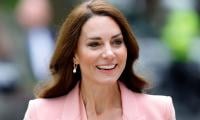 Inside How Kate Middleton Stayed Steady Amid Cancer And Royal Chaos
Inside How Kate Middleton Stayed Steady Amid Cancer And Royal Chaos -
 Kate Hudson Jokes She May Write A Script To Star Alongside This Actress
Kate Hudson Jokes She May Write A Script To Star Alongside This Actress -
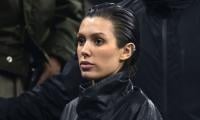 Kanye West's Wife Bianca Censori Shows Off Hidden Talent
Kanye West's Wife Bianca Censori Shows Off Hidden Talent -
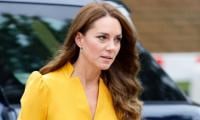 Kate Middleton Has Learnt Her 'lesson' After 'powering Through'
Kate Middleton Has Learnt Her 'lesson' After 'powering Through' -
 Will Prince Harry Be A Working Royal Again For Archie, Lilibet’s Royal Prospects? Expert Answers
Will Prince Harry Be A Working Royal Again For Archie, Lilibet’s Royal Prospects? Expert Answers -
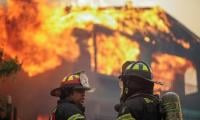 Chile In Danger: Deadly Wildfires Kill 20,forced 50,000 To Flee; President Declares ‘State Of Catastrophe’
Chile In Danger: Deadly Wildfires Kill 20,forced 50,000 To Flee; President Declares ‘State Of Catastrophe’ -
 Prince Harry’s Relationship With King Charles 'changes' With Archie, Lilibet’s UK Doors Opening
Prince Harry’s Relationship With King Charles 'changes' With Archie, Lilibet’s UK Doors Opening -
 Sara Waisglass Addresses Fans Concerns About Recasting In 'Ginny & Georgia'
Sara Waisglass Addresses Fans Concerns About Recasting In 'Ginny & Georgia' -
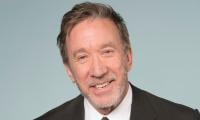 Tim Allen Reflects On Stepping Into Mentorship During 'Home Improvement' Gig
Tim Allen Reflects On Stepping Into Mentorship During 'Home Improvement' Gig -
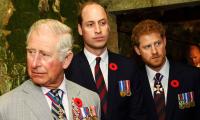 Royal Tensions Rise As King Charles Navigates Prince Harry, William Feud
Royal Tensions Rise As King Charles Navigates Prince Harry, William Feud -
 Katie Bates Husband Travis Clark Confesses He Cheated On Her
Katie Bates Husband Travis Clark Confesses He Cheated On Her -
 Andrew Makes Life As Newly Stripped Commoner Offensive To The People
Andrew Makes Life As Newly Stripped Commoner Offensive To The People -
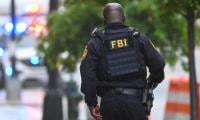 Kansas Woman Loses $255,000 In Gold In FBI Impersonation Scam
Kansas Woman Loses $255,000 In Gold In FBI Impersonation Scam -
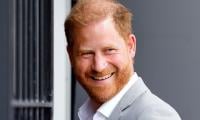 Prince Harry Arrives In UK To Fight His Phone Hacking Case
Prince Harry Arrives In UK To Fight His Phone Hacking Case -
 Nick Jonas Attempts To Take Break From Jonas Brothers With Upcoming Solo Album?
Nick Jonas Attempts To Take Break From Jonas Brothers With Upcoming Solo Album?
